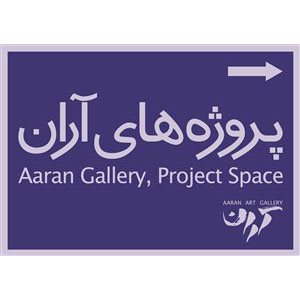 پروژههای آران
پروژههای آران
شهرآرا
نمایشگاه انفرادی امین اسکندری
افتتاحیه 19 مرداد ماه 1397
ابراهیم اسکندری دغدغه اضمحلال و فراموش شدن عناصر و نمادهای شهری نظیر اتوبوسهای دوطبقه ، تاکسی پیکان، جعبه های پست و باجه های تلفن را دارد. او توجه مخاطب را به جزییاتی که معمولا" سرسری گرفته میشوند جلب می کند، و اشیـا و ابزاری که علیرغم بار تاریخی و احساسات و خاطراتی که به همراه خود دارند، به دست فراموشی سپرده شده اند را به صحنه امروز باز می گرداند. همه چیز در ایران تغییر می کند، خیلی از اوقات به گذشته و تاریخ اهمیتی داده نمی شود، و همزمان عناصری هستند که مخصوصا" به محاق فراموشی رانده میشوند تا از حافظه جمعی زدوده شوند. زندگی ایرانی که به سهولت بریده و کوتاه و بی سرانجام می شود.
پیکان تحت لیسانس برای 38 سال در ایران تولید شد. در سالهای اولیه مالکیت اتوموبیل پیکان نشانه ی از "رسیدن" بود: رسیدن به وضعیت اجتماعی مطلوب و امید به رفاه در آینده. نخست وزیر وقت آرزوی یک پیکان برای هر ایرانی را به شعاری اقتصادی مبدل کرد: بخشی از "خواب ایرانی"؛ ولخرجی ملی و سرخوشی و مستی از آشامیدن دلارهای نقتی آسان.
بعد از انقلاب پیکان زرق و برق خود را از دست داد، پیکان "جوانان" از رده تولید خارج شد و پیکان "کار"، ابتدائی و محکم، تنها انتخاب مردمی شد که صبورانه برای به دست آوردن آن صف کشیدند.چند سال بعد از جنگ مالکیت پیکان نشانی از شکست داشت، تعلق داشتن به طیف گسترده ی از مردم نجیبی که سالهای خشونت و جنگ را تحمل کرده بودند.
این سقوط اجتماعی و اقتصادی جوهره این مجموعه آثار ابراهیم اسکندری است: راننده ی که با تاکسی پیکان خود معاش خانواده را تامین می کند، و همانطور که قابل پیش بینی است به طور مداوم از وضعیت و زندگی خود شکایت دارد. شیری از اتوبوس دوطبقه پیاده می شود و نشانی "مهرآباد" را می پرسد و بدون کوچکترین درنگی راننده که با دنیای سوررئال و عجیب و غریب زندگی ایرانی کاملا" آشناست، مسیر "مهرآباد" را به شیر نشان می دهد.
قاعده بی قاعدگی زندگی ما، درد ایران، و تمام عجایب و توهمات آن و همزمان میل به بقا و حتی امید به گذر از مشکلات و آینده ی بهتر، این نمایشگاه را شکل می دهند. ابراهیم اسکندری با بهره از مهارت های خود به عنوان یک مجسمه ساز، نمائی کلی از تغییرات در روش زندگی ایرانیان را به تصویر می کشد، ملتی که بیش از هرچیز شاید نیاز دارد که که با درک ریشه مشکلات با واقعیت ها کنار بیاید و از توهمات دوری کند.
پروژه های آران
خیابان نوفل لوشاتو کوچه لولاگر پلاک 5
روز افتتاحیه 4-8
بازدید روزهای عادی همه روزه به جز روزهای شنبه. بین ساعات 1-7
تلفن 66702233
Shahrara
Solo exhibition of Ebrahim Eskandari
Opening on 10th August 2018
Peykan
Ebrahim Eskandari is preoccupied with the forgotten and vanishing city elements, such as double decker buses, the Peykan car, Post boxes, Telephone booths. He draws our attention to details that are often neglected, bringing abandoned objects and feelings and memories associated with them into the limelight. Everything changes in Iran, very often the past and history is disregarded, and then there are also the elements that are purposely removed to obliterate the past. This, again, is the Iranian life, simply cut short and discontinued.
Peykan car was produced under license in Iran for 38 years, beginning by 1967. In the first years, owning a Peykan was a sign of “having arrived”: a symbol of certain social status, and future prosperity. The Prime Minister of the time wished One Peykan for Every Iranian, it was part of the Iranian dream; our spending spree, the tipsiness that came with drinking too much easy petro dollars.
With the Revolution in 1978 Peykan lost its allure, the trendy “Youngster” series went out of production and the “Labor Peykan”, basic and sturdy, was the only option and people queued up and patiently waited for delivery of their Peykans. Few years after the war owning a Peykan was a sign of failure, of belonging to the masses of decent people who lost so much through the years of violence and war.
It is this coming down in the world that is the spice in the new work of Ebrahim Eskandari. A taxi driver who earns his living by driving his Peykan,- and true to form is constantly nagging about his life and the conditions (a national past time). A lion descends a double decker and asks for direction to “Mehrabad”- the old airport of Tehran- and without a pause the man who by now is used to the surreal in Iranian life, gives him the directions.
The regular irregularity of our lives, the pain of Iran, and its illusionary dimensions and at the same time the will to survive and even hope for future, are at the heart of this exhibition. Applying his considerable skill as a sculptor, Ebrahim Eskandari outlines the many changes in the Iranian way of life, a nation that needs to come to terms with the reality on the ground and stay away from illusions and slogans.
Aaran Projects
Neauphle Le Chateau, Lolagar st. No 5.
Tel +98 21 66702233
For Opening day: 4-8
And everyday visiting hours, between 1-7 pm , except Saturdays.
Instagram account: Aarangallerytehran
Facebook page: aarangallery

